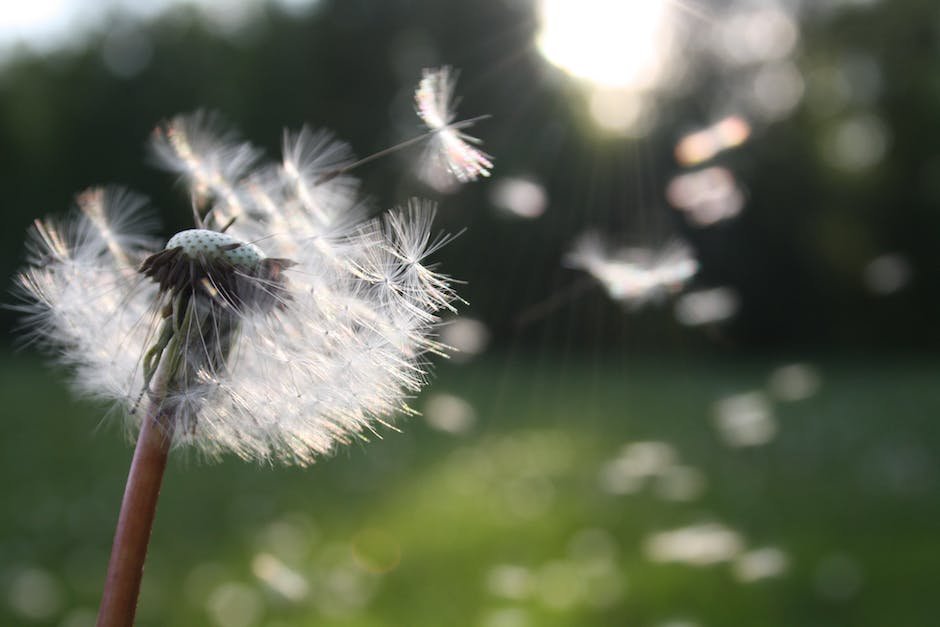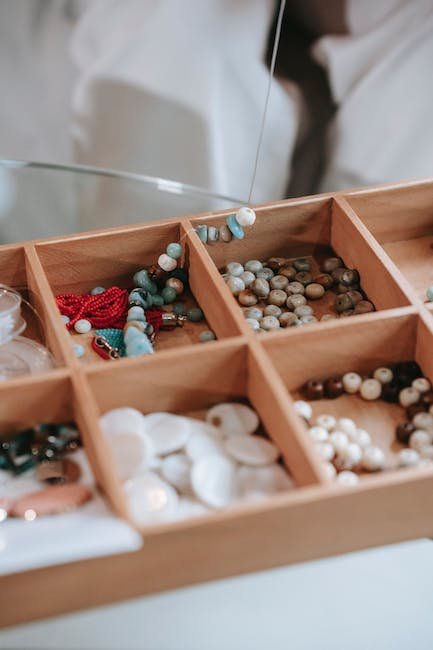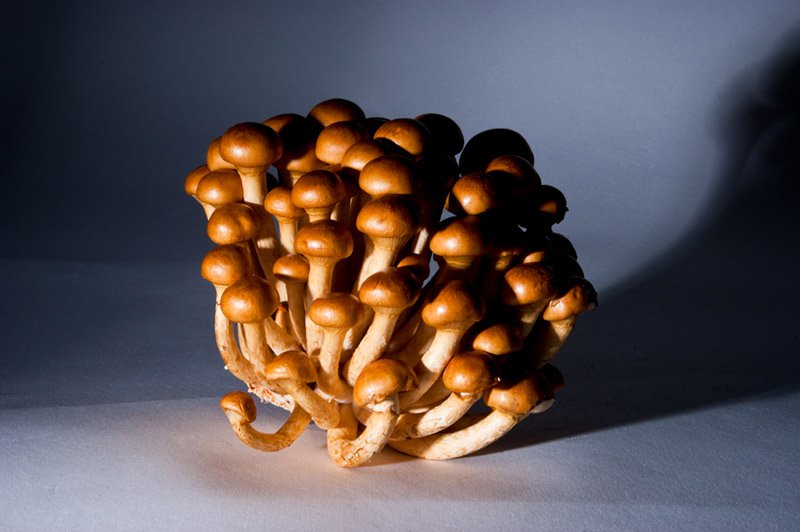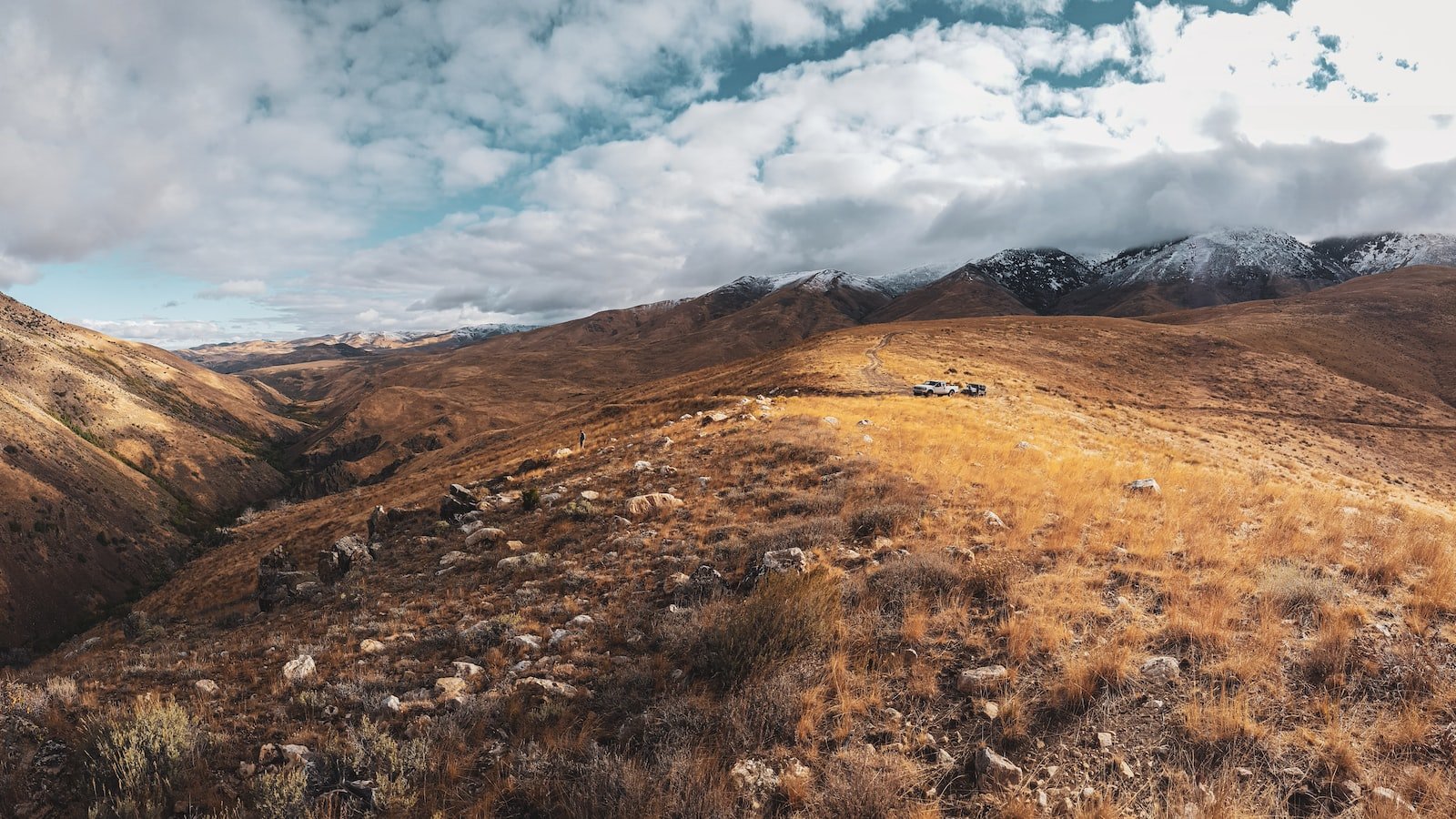Now Reading: How to Make Your Own DIY Seed Foraging Kit
-
01
How to Make Your Own DIY Seed Foraging Kit

How to Make Your Own DIY Seed Foraging Kit
Picture this: you’re strolling through a serene forest, the leaves gently rustling beneath your feet, while the crisp scent of the earth fills the air. Each step uncovers a hidden treasure—a vibrant, intriguing seed patiently waiting to be discovered. The thrill of foraging for seeds and the promise of growing new life is an adventure unlike any other. If you’re eager to embark on this enchanting journey, then join us as we unveil the secrets to creating your own DIY seed foraging kit. With a few simple tools and a sprinkle of creativity, you’ll be equipped to unlock nature’s most precious gems and unleash your inner green thumb. So, dust off your imagination and let’s dive into the art of seed foraging!
Table of Contents
- Materials You Need for Your DIY Seed Foraging Kit
- – Gathering the essential tools and supplies for your seed foraging adventures
- Choosing the Right Containers for Seed Collection
- – Exploring suitable containers to ensure safekeeping and preservation of different types of seeds
- Step-by-Step Guide to Constructing Your DIY Seed Sorting Tray
- - Designing and building a practical tray to organize and clean collected seeds efficiently
- Tips for Properly Labeling and Storing Collected Seeds
- – Ensuring clear identification and maintaining seed viability for future use
- Enhancing Your Foraging Skills: Techniques for Locating and Harvesting Seeds
- – Expert advice on finding different types of seeds and maximizing your seed collection efforts
- Q&A
- In Retrospect

Materials You Need for Your DIY Seed Foraging Kit
Your DIY seed foraging kit is an essential tool for any nature enthusiast or avid gardener. With this kit, you’ll be empowered to explore the great outdoors and collect a diverse range of seeds to expand your plant collection or contribute to important conservation efforts. To get started, gather the following materials:
- A Sturdy Backpack: Choose a backpack with enough space to hold all your foraging essentials. Look for one with multiple compartments for easy organization.
- Identification Books or Apps: Utilize reliable plant identification resources to accurately determine the seeds you discover. Whether it’s a comprehensive book or a smartphone app, having this tool will be invaluable during your outings.
- Small Glass or Plastic Containers: Collecting seeds require proper storage. Use small glass or plastic containers with tightly sealed lids to keep your seeds safe and protected until you can properly process them.
- Ziplock Bags or Envelopes: These are useful for collecting seeds in larger quantities or when you need to separate different seed types. Label each bag or envelope with pertinent details such as the plant species, location, and date of collection.
- Gloves and Tweezers: To handle delicate seeds, it’s essential to have gloves and tweezers on hand. This helps ensure that your collected seeds remain undamaged during the foraging process.
- Camera or Smartphone: Capture the beauty of the plants and their surroundings by bringing along a camera or smartphone. It’s great for documentation purposes, as well as sharing your discoveries with fellow nature enthusiasts.
Equipped with your DIY seed foraging kit, you’ll be ready to embark on exciting excursions and unlock the wonders of the natural world. Remember to always respect the environment and obtain any necessary permits for seed collection in protected areas. Happy seed hunting!

– Gathering the essential tools and supplies for your seed foraging adventures
Gathering the Essential Tools and Supplies for Your Seed Foraging Adventures
Gearing up for your seed foraging adventures? Prepare yourself with the essential tools and supplies to make the most out of your quest for nature’s treasures. Whether you’re a seasoned forager or a beginner, having the right equipment will enhance your experience and help you collect seeds efficiently.
Here’s a checklist of must-have tools and supplies to pack before venturing into the wild:
- A trusty identification guide: Don’t leave home without a reliable guidebook or smartphone app that can assist in identifying different plant species. Look for one with colorful illustrations or vivid photographs to help you determine the characteristics of seeds and plants.
- A sturdy canvas or mesh bag: Invest in a spacious bag that allows the seeds to breathe while preventing them from escaping. Opt for a bag made of natural fibres like canvas or mesh, as they are eco-friendly and won’t damage delicate plant materials.
- Collection containers: Bring a variety of containers to accommodate different seed sizes. Small envelopes, glassine bags, or labeled glass jars can keep your seeds safe and organized. Remember to label each container with details like the plant name, location, and collection date.
- Gloves and magnifying glass: Protect your hands from prickly plants with a sturdy pair of gloves. Additionally, a magnifying glass can come in handy to examine intricate details or tiny seeds.
- Plant press or blotting paper: Preserve your seed specimens with a plant press or blotting paper. This will help remove excess moisture, preventing mold and keeping your seeds in optimal condition for long-term storage.
With these tools and supplies in your seed foraging arsenal, you’re well-equipped to embark on an exciting and fruitful botanical adventure. Remember to respect local regulations and obtain necessary permits if required. Happy seed hunting!
Choosing the Right Containers for Seed Collection
Considerations for Selecting Containers for Seed Collection
When it comes to seed collection, the choice of containers is an important factor that can significantly impact the success of your endeavor. Here are some key considerations to keep in mind when selecting the right containers:
- Size: Opt for containers that are spacious enough to accommodate the seedlings as they grow. Providing ample space allows for healthy root development and reduces the need for transplanting.
- Material: Choose containers made of durable and breathable materials to ensure proper air circulation and moisture control. Options range from traditional clay pots to biodegradable containers made from peat or coir.
- Drainage: Adequate drainage is essential to prevent waterlogging and root rot. Look for containers with holes or self-draining systems to facilitate excess water runoff.
- Transparency: While not necessary, transparent containers can be advantageous for monitoring seedling growth, root development, and soil moisture levels without disturbing the plants.
By considering these factors and finding the perfect containers for seed collection, you can ensure optimal conditions that promote healthy growth and increase the chances of successful gardening endeavors. Happy seed collecting!
– Exploring suitable containers to ensure safekeeping and preservation of different types of seeds
Exploring suitable containers to ensure safekeeping and preservation of different types of seeds
When it comes to preserving and storing seeds, choosing the right container is crucial to maintain their quality and viability. Various factors, such as moisture, temperature, and light, can significantly impact the longevity of seeds. Here are some suitable containers that can help ensure the safekeeping and preservation of different types of seeds:
- Sealed Glass Jars: Glass jars with airtight seals provide an ideal environment for seed storage. The transparency allows for easy identification and monitoring of the contents, while the seal prevents moisture and air from entering.
- Plastic Ziplock Bags: Ziplock bags have long been a popular choice for seed storage due to their convenience and affordability. Choosing thick, durable bags and removing excess air before sealing can help protect the seeds from moisture and temperature fluctuations.
- Seed Envelopes or Paper Packets: Seed envelopes or paper packets are commonly used by seed companies and gardeners alike. These envelopes are typically made of moisture-resistant paper and provide a breathable environment for the seeds. Labeling the envelopes with the seed type and date of collection can aid in organization.
Regardless of the selected container, it is essential to store seeds in a cool, dry, and dark place away from direct sunlight. Regularly inspecting the containers and monitoring the seed condition is recommended to ensure any signs of moisture or mold can be promptly detected. By employing these suitable containers, you can maximize the chances of successful seed germination and preserve the diversity of plant species for future generations.
Step-by-Step Guide to Constructing Your DIY Seed Sorting Tray
Embark on your gardening journey with a homemade seed sorting tray that is not only functional but also a great way to showcase your DIY skills. Follow this simple step-by-step guide to create your very own seed sorting tray:
- Begin by gathering your materials: a sturdy wooden board, a ruler, a pencil, a saw, sandpaper, wood glue, small wooden dividers, and a hammer.
- Measure and mark the dimensions of your desired seed sorting tray on the wooden board using a pencil and ruler. Keep in mind the size of the seeds you plan to sort and allocate enough space accordingly.
- Carefully cut the wooden board along the marked lines using a saw. Take your time and ensure the edges are smooth.
- Using sandpaper, gently sand the edges and surfaces of the wooden board to remove any splinters and create a polished finish.
- Next, take your small wooden dividers and arrange them on the wooden board to create separate compartments for each type of seed.
- Apply wood glue along the bottom edges of the dividers and carefully place them onto the wooden board, ensuring they are aligned properly.
- Secure the dividers in place by gently tapping small nails into each corner, using a hammer. Take caution not to split the wood.
- Allow the wood glue to dry completely before using your DIY seed sorting tray.
Now, you’re ready to sort and organize your seeds with ease and efficiency. This simple and customizable seed sorting tray will save you time and streamline your gardening process. Get creative with the design and make it uniquely yours!
– Designing and building a practical tray to organize and clean collected seeds efficiently
Designing and building a practical tray to organize and clean collected seeds efficiently
When it comes to collecting and storing seeds, organization is key. That’s why we’ve embarked on a journey to design and build the ultimate tray that will revolutionize the way you handle and clean your collected seeds. Our aim is to provide a practical solution that simplifies the process, saving you time and effort.
We understand the frustration of rummaging through piles of seeds and the tediousness of manual cleaning techniques. That’s why our tray incorporates innovative features that make the entire process a breeze. With a sleek design and durable construction, this tray is built to withstand the rigors of seed collection and cleaning.
- Efficient organization: The tray is thoughtfully divided into sections, allowing you to categorize and separate different types of seeds. This makes it easy to locate specific seeds without any hassle.
- Easy cleaning: Our tray features a removable mesh bottom that allows dirt and debris to sift through, leaving only the clean seeds behind. Simply lift the mesh and empty the residue, saving you time and ensuring a thorough cleaning process.
- Durable construction: Made from high-quality materials, our tray is built to last. Its sturdy design ensures resistance to wear and tear, providing you with a reliable tool for years to come.
With our practical tray, you can say goodbye to the chaos and mess associated with seed organization and cleaning. Experience the ease and efficiency of our innovative solution, and take your seed collection to the next level.
Tips for Properly Labeling and Storing Collected Seeds
When it comes to collecting and preserving seeds, proper labeling and storage techniques are essential to maintain the viability and longevity of your precious collection. Here are some useful tips to help you ensure the quality and organization of your collected seeds:
- Label with detail: Start by clearly labeling each seed packet with vital information such as the plant species, variety, and date of collection. Including any specific growing requirements or special notes will also be valuable in the future.
- Use waterproof labels: To prevent fading or loss of information, opt for waterproof labels or invest in label protectors. This will protect your labels from water damage, humidity, and other environmental factors.
- Organize systematically: Create a well-structured system to keep your seeds organized. Arrange them alphabetically, by plant family, or even by planting season. Additionally, maintaining a digital record or spreadsheet alongside your physical collection can be tremendously helpful.
- Store in a cool, dry place: Proper storage conditions are crucial for seed longevity. Choose a dark, cool, and dry location to prevent mold, mildew, or premature germination. Airtight containers, such as glass jars or resealable bags, can help maintain ideal moisture levels.
- Consider temperature control: For long-term storage or delicate seeds, refrigeration or freezing might be necessary. Just make sure to allow the seeds to reach room temperature before opening the container to prevent condensation.
By implementing these tips, you’ll be well on your way to building a well-organized collection of labeled and preserved seeds. Remember, proper labeling and storage not only protect your hard work but also ensure the seeds’ viability for future planting and sharing with fellow gardeners.
– Ensuring clear identification and maintaining seed viability for future use
Ensuring Clear Identification and Maintaining Seed Viability for Future Use
Preserving plant diversity is crucial for the sustainability of our environment and the preservation of our natural world. To ensure clear identification and maintain seed viability, a systematic approach is required. Here are some key steps to follow:
- Accurate labeling: Properly labeling each seed specimen is essential for identification and organization. This includes recording pertinent information such as the plant species, date of collection, and location.
- Safe storage conditions: Maintaining optimal environmental conditions is crucial for seed viability. Storing seeds in a cool, dry, and dark environment can extend their lifespan and increase the chances of successful germination in the future.
- Regular viability testing: It is important to regularly test seed viability to monitor their potential for successful germination. This can be done through methods such as the tetrazolium test or germination trials. Conducting these tests periodically helps identify any decrease in viability and allows for timely intervention.
By following these practices, we can ensure that our seed collections are properly identified, organized, and stored, guaranteeing their potential for future use and contributing to the preservation of plant biodiversity for generations to come.
Enhancing Your Foraging Skills: Techniques for Locating and Harvesting Seeds
Foraging is a skill that connects us to our ancestral roots, allowing us to gather food directly from the earth. If you are looking to enhance your foraging skills specifically for locating and harvesting seeds, then you have come to the right place! In this post, we will explore some tried and true techniques that will help you become a master seed forager.
1. Observing and identifying seed-bearing plants:
One of the fundamental skills of a successful seed forager is the ability to recognize seed-bearing plants. Take the time to study the characteristics of different plant species in your area. Look for distinctive features such as seed pods, cones, or stalks that are ready to burst with seeds. Train your eye to spot these plants in various landscapes, from forests to meadows and even urban environments.
2. Timing is everything:
To maximize your success rate in seed foraging, it’s crucial to understand the ideal timing for harvesting seeds. Some plants release their seeds when they are still green, while others wait until they are fully mature and have turned brown. Research the specific plants you are interested in and learn about their seed dispersal mechanisms. This knowledge will help you determine the perfect moment to collect seeds when they are at their peak viability.
3. Harvesting and storing seeds:
When collecting seeds, it’s important to do so responsibly and sustainably. Always be mindful of the ecosystem and make sure to only harvest a small portion of the seeds, leaving the majority to ensure future growth and biodiversity. Depending on the type of seeds, different techniques may be required for extraction. Some seeds can be easily collected by hand, while others require more delicate procedures. After harvesting, ensure proper drying and storage conditions to maintain seed quality and viability.
With these techniques and a curious mindset, you’ll be on your way to developing exceptional seed foraging skills. Remember to respect nature’s abundance and always prioritize the long-term health of the environment. Happy foraging!
– Expert advice on finding different types of seeds and maximizing your seed collection efforts
Expert advice on finding different types of seeds and maximizing your seed collection efforts
Embarking on a seed collection journey opens up a world of diverse and fascinating plant species waiting to be discovered. With our expert advice, you can enhance your ability to find and gather various types of seeds, allowing your collection to flourish. Here are some tips to help maximize your seed collection efforts:
1. Explore the great outdoors:
Head out into nature and explore different ecosystems to discover a vast array of seeds. Take leisurely walks through forests, meadows, or along riverbanks. Pay attention to the various plants you encounter, and keep an eye out for mature seed pods or cones. Observe how seeds disperse and take note of their unique adaptations for dispersion methods such as wind, water, or animal interaction.
2. Engage with gardening communities:
Join local gardening clubs, online forums, or social media groups to connect with fellow seed enthusiasts and exchange valuable knowledge. These communities can provide helpful insights into where to source specific types of seeds, share personal experiences, and even participate in seed swaps. Collaborating with others passionate about seed collection will broaden your horizons and enhance your collection efforts.
3. Utilize seed catalogs and websites:
Enrich your seed collection by exploring seed catalogs, both online and in print. These catalogs showcase a wide range of seeds, including rare and exotic varieties. Look for specialized seed companies that offer a diverse selection, ensuring you obtain a variety of seeds for your collection. Additionally, websites dedicated to seed exchanges or local seed banks can provide valuable resources to help you access unique seeds and contribute to conservation efforts.
By incorporating these expert tips into your seed collection pursuits, you will not only expand your collection but also deepen your understanding and appreciation for the incredible diversity Mother Nature has to offer.
Q&A
What materials do I need to make my DIY seed foraging kit?
You will need a small tote bag or backpack, small glass jars or envelopes for storing the seeds, garden gloves, a small trowel or hand rake, a field guide or smartphone app to identify seeds, and a marker or labels to keep track of the seeds you collect.
Can I use any type of tote bag or backpack for my seed foraging kit?
Yes, you can use any small tote bag or backpack that is comfortable to carry and has enough space to hold your materials. Opt for a bag made of durable material to withstand outdoor settings and ensure it has multiple compartments or pockets to keep things organized.
Where can I find small glass jars or envelopes for storing the seeds?
You can find small glass jars at craft stores or repurpose empty spice containers. Alternatively, you can use small envelopes or coin envelopes, available at office supply stores or online. Make sure the containers are clean and dry before storing your collected seeds.
Do I really need gloves for seed foraging?
Wearing garden gloves is recommended to protect your hands from prickly plants, thorns, or any potential irritants. It also prevents the transfer of oils or substances that may alter seed viability. Plus, gloves provide added grip when handling tools or uneven terrain.
Do I have to purchase a field guide or can I rely on a smartphone app for seed identification?
The choice is yours. A field guide provides a tangible resource without relying on technology, but a smartphone app can be more interactive, providing pictures, descriptions, and even audio recordings. Some apps even allow you to conveniently save and organize your findings.
How can I keep track of the seeds I collect?
You can use a marker or labels to write down important information such as the plant name, location, and date of collection. Attach the labels to your glass jars or envelopes. Additionally, you can maintain a journal or spreadsheet to record detailed observations and information about your collected seeds.
Is there a specific time of the year when seed foraging is most productive?
Seed foraging is most fruitful during late summer and early autumn when many plants have matured and begun to produce seeds. However, certain plants may have different seed dispersal times, so it’s a good idea to research the plants you are interested in foraging seeds from and plan accordingly.
Are there any ethical considerations when seed foraging?
Yes, when seed foraging, it’s important to prioritize environmental sustainability and respect for the plant and its ecosystem. Only collect seeds from abundant plant populations, avoid harvesting rare or endangered species, and ensure you leave enough seeds behind for natural reproduction and wildlife consumption.
In Retrospect
As we conclude this adventurous journey of crafting your very own DIY seed foraging kit, we hope you have unearthed a world of possibilities and rekindled a profound connection with nature. Remember, this humble kit is not just a collection of tools, but rather a portal to a world brimming with enchanting landscapes and untold stories.
As you venture into the great outdoors armed with your newfound companion, dare to explore the wild corners of the earth. Immerse yourself in the fascinating treasure hunt for nature’s living legacies, navigating through meadows, forests, and forgotten trails.
With your DIY seed foraging kit, you’ll uncover the secret lives of plants, witness the diverse tapestry of colors, and be captivated by the rhythmic symphony of buzzing bees and chirping birds. As you gently gather the seeds that lie hidden within nature’s grasp, embrace the feeling of connecting to a profound cycle of life, where generations past and present intertwine.
Share your discoveries with others, for the true beauty of seed foraging lies not only in the seeds themselves but also in the stories they carry. Enchant your loved ones with tales of how you plucked a seed from a remote mountaintop, or stumbled upon a hidden valley where wildflowers dance under the moonlight.
But remember, foraging responsibly is paramount. Treat the ecosystems with respect, allowing them to thrive and perpetuate their magic. As stewards of this earth, we have a duty to sustain its delicate balance, protecting the enchanting spectacles that have enchanted us for generations.
So, dear adventurers, as you tackle this journey armed with perseverance and curiosity, may your DIY seed foraging kit become more than just a tool. May it be a catalyst for wonder, reflection, and connection—an instrument that ignites a dormant passion for nature’s mysteries.
Now, go forth, explore, and nurture the seeds of inspiration that lie within you. The world awaits, ready to reveal its hidden marvels to those who dare to embark on this humble adventure. Happy foraging, dear nature enthusiasts!
As an affiliate, my content may feature links to products I personally use and recommend. By taking action, like subscribing or making a purchase, you’ll be supporting my work and fueling my taco cravings at the same time. Win-win, right?
Want to read more? Check out our Affiliate Disclosure page.





